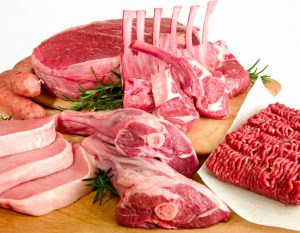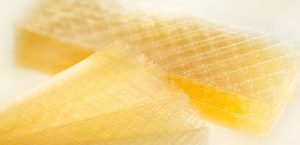Whether you’re starting out a new diet regimen, or in a diet restriction, your religious preference, and for health reasons, it’s definitely okay to become a vegetarian. You can make a decision to rekindle your relationship with healthy foods, fruits, and vegetables and rid yourself from eating meat. But we all know for a fact that it’s easier said than done. For one, there’s something about the delicious taste and texture of the meat that we love, which makes it difficult to give it up. Moreover, we’ve somehow trained our thoughts that eating vegetables is dull and boring, especially with their seemingly bland taste.
How can you make this painful transition? We are here to give you the secret. The truth is, becoming a vegetarian is not as hard as people claim. Here are some hacks on how to become a vegetarian in no time!
“When it comes to meat, change is almost always cast as an absolute. You are a vegetarian or you are not.”— Jonathan Safran Foer
 Start with Red Meat
Advertisements
Start with Red Meat
Advertisements

As a human being, you have a habit. Having a routine is what keeps you going. Developing a habit can be difficult, and changing a habit that already exists can be even harder. Even more so if you try to change a habit suddenly. The same thing applies to your diet. We don’t recommend going cold turkey when you decide to become a vegetarian. No. We will take things nice and slow. And we’ll start it with getting rid of red meat. We’ll start with getting rid the most common ones- pork, lamb, and beef. They are the unhealthiest types of meats we can eat.
Start replacing these with chicken, poultry products, or fish and test their effects. You can do this for a week or a month depending on your preference. After that, start eliminating chicken until you get used to eating only fish. If you want to be a pescetarian, then you can retain fish in your diet. If not, you can replace meat with legumes, and in some cases, you can retain eating egg and milk too depending on what type of vegetarian you want to be. Also, ensure you prepare a list of substitutions for every non-vegan ingredients so as to know which products to include as you cook your vegan meal.
 Start reading food labels (Beware of gelatine, it’s not vegetarian!)
Start reading food labels (Beware of gelatine, it’s not vegetarian!)
Being a vegetarian does not just mean that you have to get rid of raw meat products. Rather, you need to avoid meat in any form.Now, this can be really tricky as food manufacturers love to deceive people. They put some meat ingredients and disguise them under an unfamiliar name, terming them as “vegan ingredients”! Most of these products are the thickeners and additives that should be “animal-free” are the products we need to avoid!
 Here’s a helpful guide on how to identify (and avoid) these non-vegan products:
Here’s a helpful guide on how to identify (and avoid) these non-vegan products:
- Carmine/cochineal (E120) – Red pigment of crushed female cochineal beetle, used as a food coloring.
- Casein – from milk ( protein).
- Lactose – from milk (a type of sugar).
- Whey – from milk. Whey powder comes in many products. Look out for it in crisps, bread, and baked products.
- Collagen – from the skin, bones, and connective tissues of animals such as cows, chicken, pigs, and fish. It is used in cosmetics
- Elastin – found in the neck ligaments and aorta of bovine, similar to collagen
- Keratin – from the skin, bones, and connective tissues of animals such as cows, chickens, pigs, and fish
- Gelatine/gelatin – obtained by boiling skin, tendons, ligaments, and/or bones and is usually from cows or pigs. Used in jelly, chewy sweets, cakes, and in vitamins; as coating/capsules.
- Aspic – industry alternative to gelatine; made from clarified meat, fish or vegetable stocks and gelatine
Lard/tallow – animal fat.
- Shellac – obtained from the bodies of the female scale insect Tachardia lacca.
- Honey – food for bees, made by bees.
- Beeswax (E901) – made from the honeycomb of bees, found in lipsticks, mascaras, candles, crayons etc.
- Propolis – used by bees in the construction of their hives
- Royal Jelly – secretion of the throat gland of the honeybee
- Vitamin D3 – from fish-liver oil; in creams, lotions, and other cosmetics
- Lanolin (E913) – from the oil glands of sheep, extracted from their wool – in many skin care products and cosmetics
- Albumen/albumin – from eggs (typically).
- Isinglass – a substance obtained from the dried swim bladders of fish, and is used mainly for the clarification of wine and beer.
- Cod liver oil – in lubricating creams and lotions, vitamins and supplements
- Pepsin – from the stomachs of pigs, a clotting agent used in vitamins.




